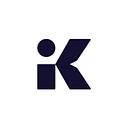Team Messaging & Chat for SMBs, Startups, and Freelancers
5 Team Messaging & Chat Software Available
Filters

0 reviews
Entry Pricing: $16
Voice AI for clearer calls. Noise removal, echo cancelation, transcription, and summaries.

No reviews yet
Entry Pricing: $115
WATI streamlines WhatsApp communication with automated notifications, segment broadcasts, and collaborative inboxes. Scalable for teams of all sizes, it integrates seamlessly with your CRM.

No reviews yet
End-to-end encrypted email service focused on privacy and security

No reviews yet
Entry Pricing: $1
Business messaging and AI agent platform for SMS, RCS, and voice

No reviews yet
Entry Pricing: $399
MirrorFly empowers you to integrate customizable video, voice, and chat features into your apps, all while maintaining control over hosting and branding for enhanced team collaboration.
What are Team Messaging & Chat?
In modern workplaces, streamlined communication is critical for keeping teams aligned and productive. Team messaging and chat software (also called chat collaboration tools, internal communication apps, or business chat platforms) provides a central hub for both real-time conversations and asynchronous messaging. These platforms enable colleagues to exchange instant messages, share files, and organize discussions by channel or topic, making information easy to find and follow. Whether team members are in the same office or spread across remote locations, chat tools keep everyone connected. They also bridge internal collaboration with customer interactions when integrated with support channels or client-facing messaging. By reducing email clutter and meeting overload, team messaging solutions help teams make decisions faster and ensure everyone stays informed, boosting overall business productivity.
- Instant Messaging & Group Chat: Real-time one-on-one and group conversations that allow employees to ask questions, share updates, and resolve issues quickly.
- Channels or Topics: Dedicated chat spaces organized by project, department, or topic so discussions stay focused and relevant to the right people.
- File Sharing & Collaboration: Easy sharing of documents, images, and files directly in chat threads, often with version tracking and collaborative editing features.
- Searchable History: An archive of past messages and files that can be searched and referenced, ensuring important decisions and knowledge are preserved and accessible.
- Notifications & Mentions: Customizable alerts and @mentions that draw attention to important messages or tasks without overwhelming users with noise.
- Voice & Video Calls: Integrated audio calls, video conferencing, and screen sharing for face-to-face discussions or quick meetings without switching apps.
- Integrations & Bots: Connections to other workplace apps (calendars, project management, CRM, etc.) and AI assistants to automate tasks, fetch data, or post updates within the chat.
- Security & Permissions: Enterprise-grade security such as encryption, single sign-on (SSO), compliance features, and admin controls to manage user access and protect sensitive information.
- Multi-Platform Access: Availability on desktop, web, and mobile devices, so team members can communicate and stay in sync from anywhere.
Frequently Asked Questions
What is team messaging software?
Team messaging software, also known as an internal communication app or business chat platform, is a communication system that enables people within an organization to chat in real time and asynchronously. It offers features like direct messaging, group channels, file sharing, and searchable conversation history. In essence, it acts as a chat collaboration tool that replaces or supplements email for many discussions, providing a faster and more organized way for teams to collaborate and stay connected.
Who uses business chat tools?
Business chat tools are used by teams and organizations of all sizes across every industry. Employees at all levels – from front-line staff to managers and executives – rely on these apps for day-to-day communication. They are especially popular among project teams, remote or hybrid workforces, and departments like IT, HR, sales, and customer support that need to coordinate quickly. Even external partners or clients can be included in certain chat channels when secure guest access is enabled, broadening their use beyond just internal staff.
Can these platforms handle both internal and external communication?
Yes. While team messaging platforms are primarily designed for internal collaboration, many can facilitate external communication as well. For example, some tools allow companies to invite clients, vendors, or contractors into specific channels or chats with controlled permissions. Others integrate with customer support systems or email, so team members can respond to external messages from within the chat interface. This flexibility means a single platform can centralize conversations with colleagues and outside contacts in a secure, organized way.
Do they integrate with other apps?
Most team messaging solutions offer extensive integrations with other business software. They can connect to project management boards, calendars, video conferencing tools, CRM systems, cloud storage, and more. These integrations allow the chat platform to pull in notifications (like task updates or calendar reminders) and let users take action without switching context. Some platforms also support bots or APIs so companies can build custom integrations, ensuring the chat app works seamlessly with their existing workflow and tools.
How secure is team messaging software?
Leading team messaging apps prioritize security and data protection. They typically encrypt data in transit and at rest, use secure authentication methods (like SSO and two-factor authentication), and offer admin controls to manage users and permissions. Many also provide compliance settings such as message retention policies, audit logs, and the ability to export or delete data to meet regulatory requirements. By choosing a reputable platform and configuring its security settings, businesses can trust that their internal conversations remain private and protected.
What features support hybrid or remote work?
Team messaging tools are built to support distributed workforces. Features like mobile and desktop sync allow employees to stay connected from home, the office, or on the go. Persistent chat channels and threads mean information is accessible across time zones, so colleagues can catch up on discussions that happened outside their working hours. Integrated video meetings and screen sharing help recreate face-to-face collaboration for remote team members. Additionally, status indicators (online, offline, do-not-disturb) and flexible notification settings let everyone manage their availability, making it easier to balance work across different locations and schedules.